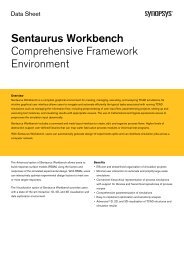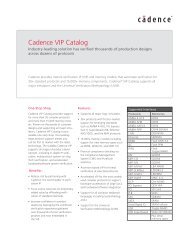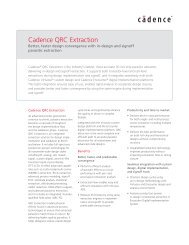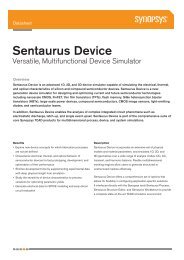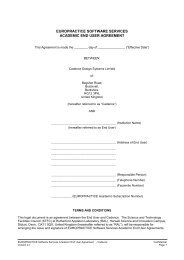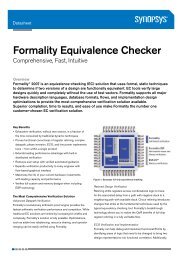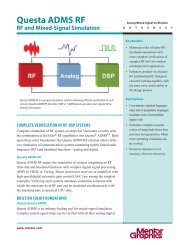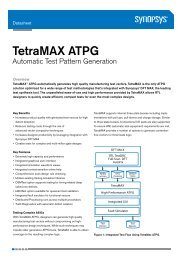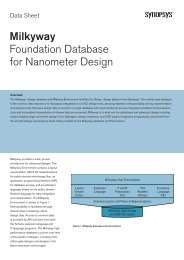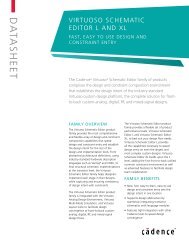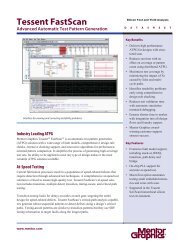Sentaurus Device Optoelectronics Datasheet - Europractice
Sentaurus Device Optoelectronics Datasheet - Europractice
Sentaurus Device Optoelectronics Datasheet - Europractice
- No tags were found...
You also want an ePaper? Increase the reach of your titles
YUMPU automatically turns print PDFs into web optimized ePapers that Google loves.
<strong>Sentaurus</strong> <strong>Device</strong> <strong>Optoelectronics</strong>65RESETVoltage [V]4321DARKILLUMINATED05e-05 0.0001Time [s]Figure 2: (Left) Four-pixel structure usedfor TCAD simulation of CMOS imagesensors, (upper right) transient voltageresponse from device simulation of onepixel for dark and illuminated conditions,and (lower right) steady-state absoluteoptical field inside a 2D cross section ofthe device for an obliquely incident planewave.Image SensorsContinued scaling of CMOS technologies and the drive todecrease pixel size have made the design of CMOS imagesensors increasingly complex. TCAD plays a significant role in thedesign of image sensors by allowing scientists and engineers tosimulate critical aspects of the process and device design.Standard CMOS process steps such as silicidation can have anadverse impact on image sensor photosensitivity. Therefore, itis often necessary to optimize the process flow to tailor specificimage sensor performance targets, a task for which TCAD isideally suited.As pixels in modern image sensors are of comparable dimensionto the wavelength of light, diffraction, polarization, andinterference effects become important, requiring full-wave opticalsimulation. Moreover, by combining multiple pixels into a singlesimulation, optical and electrical crosstalk for normal and obliqueincidence can be analyzed.When a TCAD model of the image sensor is developed, the effectof manufacturing tolerances on sensor performance, such as lensmisalignment, can be quantified in ways that are impractical oreven impossible without simulation.In summary, <strong>Sentaurus</strong> <strong>Device</strong> supports image sensor designfrom concept to manufacturing, leading to higher performanceproducts and shorter time-to-market.Optical Solvers• 1D transfer matrix method• 2D and 3D raytracing with multilayer antireflection model• 2D and 3D beam propagation method• 2D and 3D parallelized finite-difference time-domain (FDTD)solver• Different meshes for optics and electrical transport tooptimize simulation speedSpecific Physics• Industry and process-calibrated silicon data• Direct interface to the <strong>Sentaurus</strong> Process simulator• Advanced generation and recombination modelsFocused Results• Doping profile optimization• Lens and geometry optimization• Crosstalk and pixel vignetting analysis• Spectral responsivity• Charge-voltage conversion, saturation effects• Capacitance extraction• Dark and light I–V analysis• Electrical AC and transient responses• Internal and external quantum efficiencies06-14355_sdeviceopto_ds.indd 28/31/2006 10:43:09 AM



